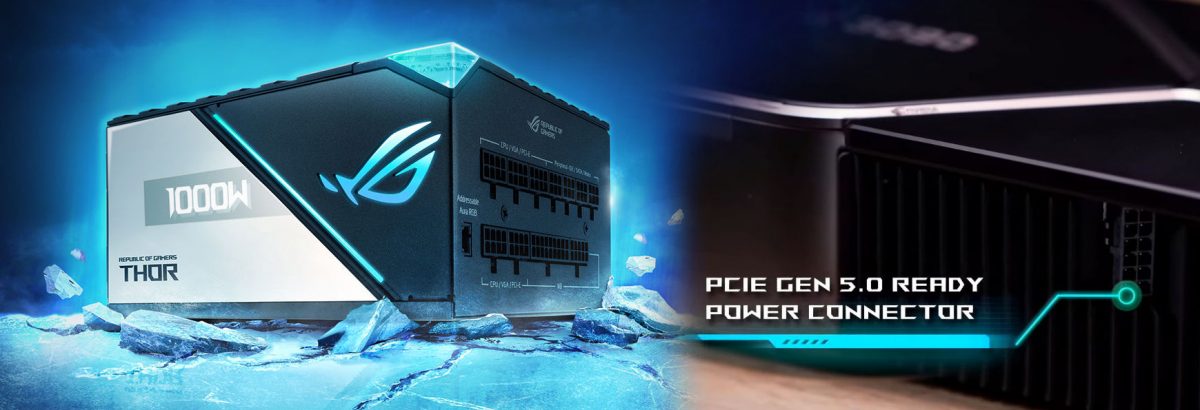ASUS has changed the ROG Thor II PSU PCIe Gen5 cable supply from 600W to 450W which implies that it won’t be 100% compliant with the new standard.
A piece of news came out a few days back that ROG Thor II PSU PCIe Gen5 12-pin cable, which by ASUS, is certainly the same cable that NVIDIA uses for its GeForce RTX 30 Founders Edition graphics cards. The news did not end here. A new twist to the story just appeared.
The difference between the PCIe Gen5 12-pin power cable and the 12+4-pin version is becoming clear now. The 12+4 one is the full spec cable giving 12 pins alongside special 4 data signal paths. The data pins need to be completely compliant with the PCI-SIG’s “12VHPWR High Power Connector (H+)” standard. It is anticipated to be the new high-power connector for next-gen GPUs.
If the cable is to offer more than 450W of power, the cable is required to have one of those signals grounded. However, we already know that the ASUS Thor PSUs only have 12-pin cable and the company has given its word on it that it ‘pipes up to 600W of power’, which means that the signal is internally grounded.
The above info has proven to be false as the company made a small change to its ASUS Thor PSUs website. ASUS does not mention 600W of power coming through a single 12-pin PCIe Gen5 cable, it shows just 450W. Hence, it turned out that in other words, no data paths are internally grounded and the cable doesn’t supply 600W. A 12+4-pin is required which should be available with even newer PSUs called ASUS Loki.
On the other hand, the NVIDIA GeForce RTX 3090 Ti flagship card is expected to offer a TDP of 450W. This is going to be the first to feature a 12+4-pin cable.
ASUS Thor is the high-end power supply to be available in 850W to 1600W power range. The company has announced that the card will be available in 1000W. It will come with a price tag of 360 USD. The 1200W and 1600W PSUs should launch by the end of the first quarter, while 850W should be expected in Q2.
Via ASUS, VideoCardz




